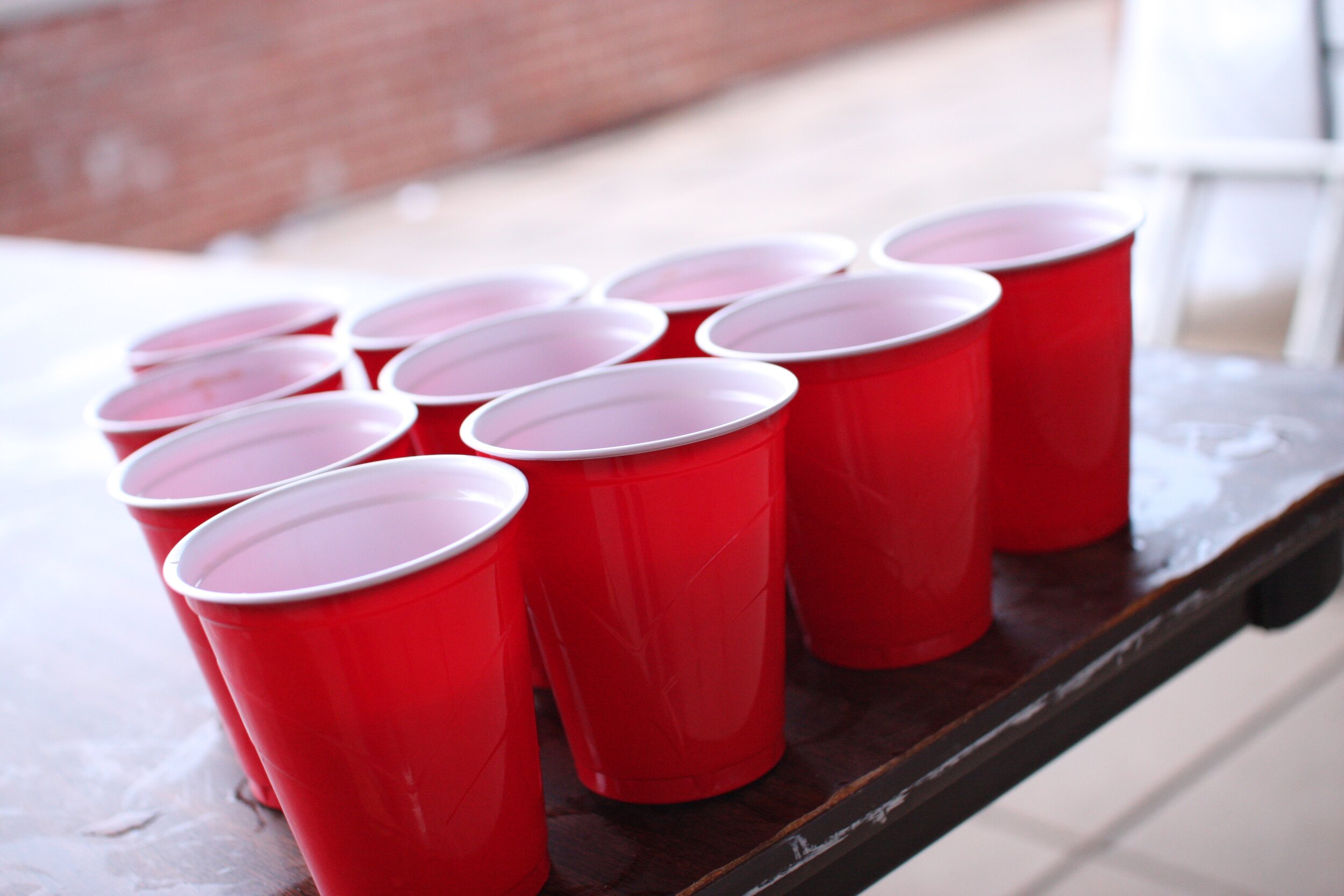Solo Cups Cause Unnecessary Waste
The red solo cup frequents college parties, tailgate scenes, and college dumpsters. It can be difficult to conceptualize just how much waste this produces, but getting some sense numerically of how much gets thrown away can help us understand how wasteful a college campus can be - or, how much potential it has to reduce waste.
A fraternity president at Northwestern University estimated that at every event, this particular fraternity goes through anywhere from 300-600 cups. With another estimate given of approximately 15-20 events a quarter, including tailgates and parties, at least 4,500 cups are being thrown away a quarter, and 12,000 at most. In a year, this number becomes 13,500 cups at the least, and 36,000 at most.
There are a dozen or so fraternities at Northwestern that regularly host events, although not all of them host events as often as others. If just six fraternities host 15 events a quarter, using 300 cups at each event, 81,000 cups end up in trash cans. Considering events hosted by other student organizations year-round that might use solo cups or other single use plastic cups, this number increases indefinitely.
This culture of disposable cups has been around for nearly a century. Dixie Cup Corporation’s employee Leo Hulseman started his own business venture in the 1930’s in Chicago: the Paper Container Manufacturing Company, which soon renamed itself Solo after its popular individual cups. In the 70’s, Hulseman’s son, Robert Hulseman, came up with the sturdy party design of the red cup well known today. Now, the red solo cup’s home is still not too far from the windy city of Chicago. Solo was acquired by Dart Container Corporation in 2012, and creates the signature solo cups in various factories in the Midwest, including several in and around Chicago.
A simple solution for how often these plastic cups are wasted may seem to be recycling, but unfortunately, the solo cup’s life story complicates this. The design Hulseman came up with makes these cups sturdy but difficult to recycle. Their particular breed of plastic is #6, the kind that makes up the styrofoam coffee cups at the doctors office, foam packing peanuts, and other well known items. This form of plastic stems from polystyrene, a stable and hard plastic used in everything from automobile parts to surfboards.
Often, polystyrene cups have remaining liquid in them, or are still wet from being rinsed out, which makes them difficult and complicated to sort through, and thus denied by many curbside recycling programs. Most municipal recycling programs do not have the technology to recycle polystyrene easily either, and so if they do accept it, it has to be shipped to a central location for recycling. Polystyrene is light, but bulky and expensive to ship after usage. Think plastic cups all stacked up vs. plastic cups haphazardly placed in bags.
However, options do exist to combat this waste accumulation. TerraCycle offers recycling of these cups, as long as they are clean and dry. Participants can collect their solo cups, print a free shipping label, and ship their used cups to TerraCycle to be made into new products.
If this already exists, though, why have organizations on college campuses not adopted this practice? There are quite a few possible explanations. Firstly, people might not even know recycling options for solo cups exists. Second, cleaning, drying, and shipping hundreds of cups off to be recycled is a labor intensive process, especially if it would have to happen almost every week. Plus, the positives of recycling the cups may well be offset by the negative carbon emissions of transporting them. Lastly, having the cups anywhere visible might indicate the fraternity or other student group on campus using these cups for alcohol, which they are generally trying to avoid advertising.
So, what can we do here at Northwestern to decrease this waste of cups? The answer is simple: stop using polystyrene solo cups. Getting organizations to stop, though, becomes more difficult in practice. Options do exist, although they might come off as difficult.
A compostable alternative from Green Paper Products exists, and 50 cups cost around $20. Unfortunately, solo cups lower costs - you can get over 200 of those red cups for about the same price. Organizations, fraternities, specifically might willingly front the cost, but the culture of a red solo cup party might inhibit them from wanting to change in the first place. The same goes for asking people to bring their own cups to an event: a cultural shift seems necessary. Reusing the cups seems unsanitary. The list of possible barriers goes on and on, made even more difficult to pin down actual reasons due to the general hush-hush regarding alcohol consumption on campus.
An attitude adjustment might be in order. If student groups hide their cup usage from school administration, perhaps a grass-roots movement from students might be better suited. If people simply started bringing their own cups to parties, fraternities might stop supplying them, or perhaps reusing or washing the cups used for drinking games. A student group could start a recycling program for the cups, accumulating, cleaning, and drying large amounts of them before shipping them out. Options do exist, it just seems that this campus has not yet pursued them.

